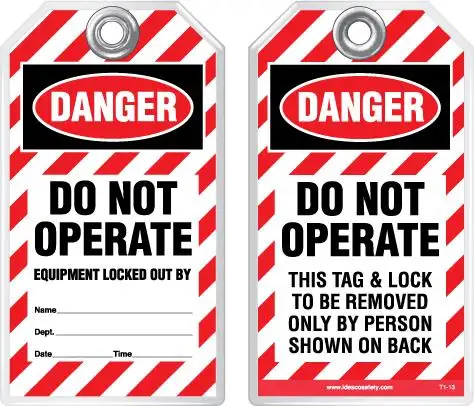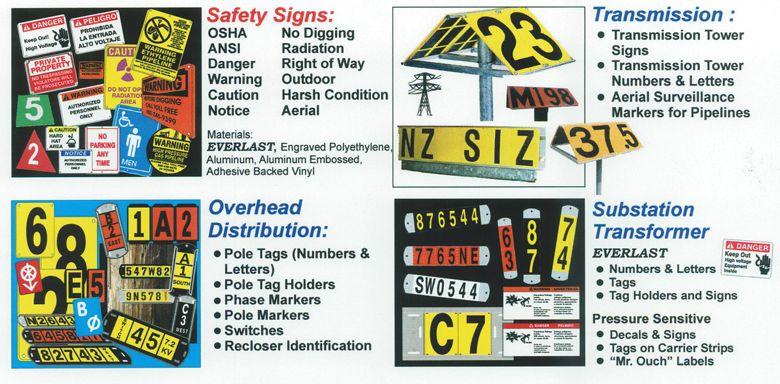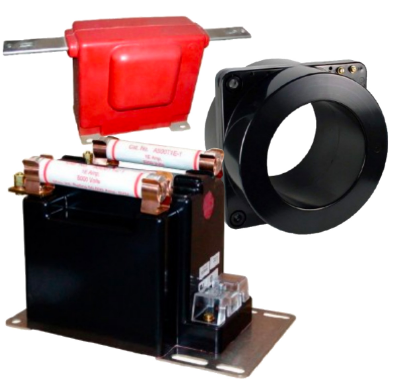High Voltage Safety Precautions and Practices
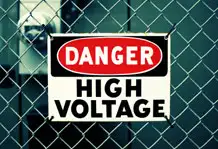
NFPA 70e Training
Our customized live online or in‑person group training can be delivered to your staff at your location.

- Live Online
- 6 hours Instructor-led
- Group Training Available
Download Our OSHA 3873 Fact Sheet – Minimum Approach Distance and Training Requirements
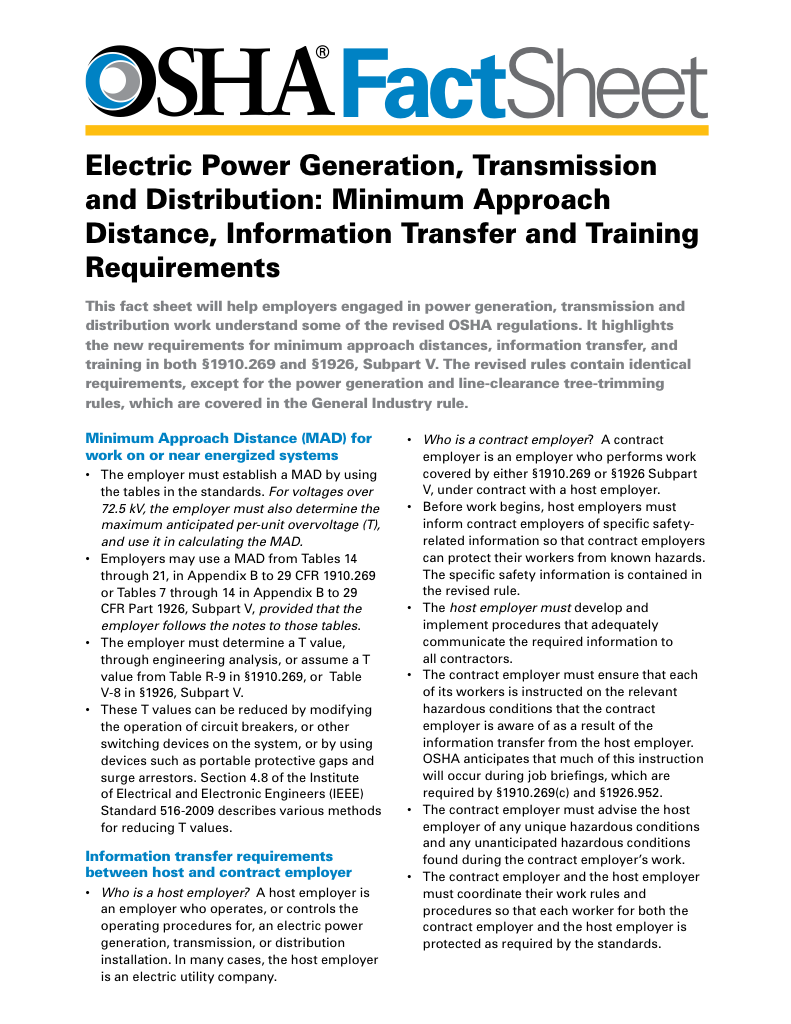
- Calculate MAD using voltage and overvoltage values
- Ensure proper communication between host and contract employers
- Meet OSHA training requirements for qualified electrical workers
High voltage safety precautions and practices follow NFPA 70E and OSHA guidelines to reduce arc flash, shock, and electrocution risks through PPE use, proper procedures, and qualified worker training.
Quick Definition: High Voltage Safety Precautions and Practices
-
✅ Definition: Safety measures designed to protect workers from hazards associated with electrical systems operating above 600 volts.
-
✅ Key Hazards: Includes risks such as arc flash, electric shock, and equipment failure.
-
✅ Protective Measures: Encompasses proper training, use of personal protective equipment (PPE), lockout/tagout procedures, and adherence to safety standards like NFPA 70E and OSHA regulations.
High voltage electrical safety involves specialized procedures and protective measures to safeguard personnel working near or on systems exceeding 600 volts. These environments pose serious risks, including arc flashes, electric shock, and equipment failure, making training, proper PPE, and adherence to safety regulations essential for preventing accidents. High voltage protection refers to the precautions and practices necessary to prevent injury or death from exposure to high-voltage electricity. High-voltage electricity safety is typically found in power lines, transformers, and other equipment used in industrial and commercial settings. Understanding the principles of engineering protection is crucial; our article on Electrical Engineering Safety delves into designing systems that prevent electric shocks and equipment failures.
Request a Free Training Quotation
The following are some essential protection measures to keep in mind when working around high-voltage electricity:
-
Proper training: Anyone working around high-voltage systems should be trained on the proper protection procedures and precautions when dealing with energized equipment. This includes knowing how to use personal protective equipment (PPE) properly and understanding the potential hazards of working with high-voltage electricity.
-
Use of appropriate PPE: Personal protective equipment (PPE) is essential for working safely around high-voltage equipment. This includes insulated gloves, protective glasses, and fire-resistant clothing.
-
Lockout/tagout procedures prevent the accidental energization of equipment during maintenance or repair work. This involves turning off the power source and securing it with a lock or tag to prevent accidental reactivation.
-
Hazard analysis: Before working on any equipment, performing hazard analysis is important to identify potential hazards and develop a mitigation plan.
-
Safe Work Practices: Safe work practices are crucial for preventing accidents and injuries associated with high-voltage electricity. These include never working alone, always maintaining a safe distance from equipment, and never assuming that equipment is de-energized and grounded.
-
Emergency procedures: In the event of an accident or injury, it is important to have emergency procedures in place to ensure a prompt response and minimize the risk of further injuries or damage.
By following these protection measures and best practices, workers can reduce the risk of injury or death when working around high-voltage electricity. Therefore, it is essential always to take protection seriously and never take unnecessary risks when working with electrical equipment. Implementing effective protection measures requires adherence to established standards; learn about the NFPA 70E Standard for Electrical Safety in the Workplace and how it guides safe work practices.
Sign Up for Electricity Forum’s Arc Flash Newsletter
Stay informed with our FREE Arc Flash Newsletter — get the latest news, breakthrough technologies, and expert insights, delivered straight to your inbox.
Visit Our High Voltage Safety Training Page:
High Voltage Protection Regulations
Regulations, such as OSHA Standard 29 CFR 1910.137, are in place to ensure that employers and workers follow established safety practices to reduce the risk of injury or death when working with high-voltage electricity. The specific regulations may vary depending on the jurisdiction, but the following are some common high-voltage protection regulations:
-
OSHA regulations: The Occupational Safety and Health Administration (OSHA) enforces protection regulations in the United States. OSHA's electrical safety standards, found in 29 CFR 1910.303-1910.308, outline requirements for working on or near exposed energized parts and controlling hazardous energy (lockout/tagout).
-
NFPA 70E: The National Fire Protection Association (NFPA) 70E standard is widely recognized for protection in the workplace. It provides guidelines for assessing electrical hazards, selecting and using PPE, establishing a protection program, and training employees.
-
The Institute of Electrical and Electronics Engineers (IEEE) has established several standards for electrical and electronic protection. These include IEEE 1584, which provides guidelines for performing arc flash hazard calculations, and IEEE 242, which provides guidelines for protecting power transformers.
-
Local regulations: In addition to national regulations, many jurisdictions have their own regulations governing high-voltage installations. These may include requirements for worker training, personal protective equipment (PPE), safety programs, and other protective measures.
-
Industry-specific regulations: Certain industries, such as the electric utility industry, have specific rules governing high-voltage operations. For example, the Federal Energy Regulatory Commission (FERC) regulates the protection of the interstate electric transmission.
Employers and workers must be aware of and comply with all applicable regulations. Failure to do so can result in penalties and, more importantly, increase the risk of injury or death. Proper use of personal protective equipment (PPE) is vital; explore our guide on Arc Flash Safety Equipment to understand the gear necessary for high-voltage environments.
These are the regulations you need to know about working with high voltage current are:
-
NFPA 70 E – Standard for Electrical Protection in the Workplace
-
29 CFR 1910.137 – Electrical Protective Devices
-
29 CFR 1910 Subpart S – Electrical
-
29 CFR 1910.147 – The Control of Hazardous Energy (Lockout/Tagout)
-
29 CFR 1910.269 - Electric Power Generation, Transmission, and Distribution
-
ANSI C2, the National Electrical Code
Although the regulations and standards are drawn from American sources, the same guidelines can be applied to Canadian workers. To grasp the fundamentals of arc flash incidents, "What Is Arc Flash" provides insights into the causes, risks, and prevention strategies associated with high-voltage systems.






